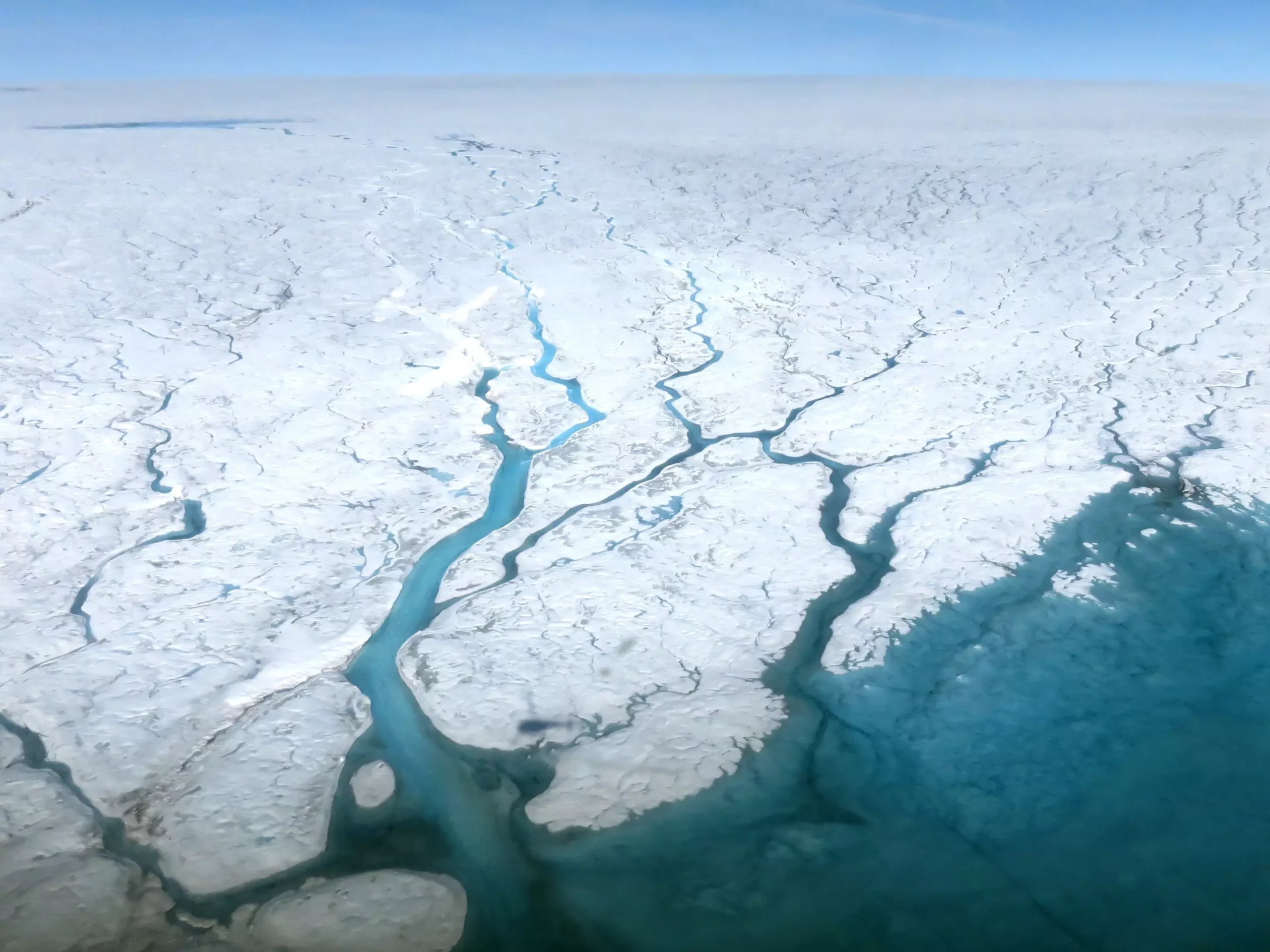The rise in global sea levels, driven primarily by climate change, poses significant threats to coastal ecosystems and human settlements alike. Recent research from The University of Texas at Austin, in collaboration with NASA’s Jet Propulsion Laboratory (JPL) and the Geological Survey of Denmark and Greenland (GEUS), sheds light on mechanisms affecting how ice sheets behave as they melt. By understanding the intricate processes of meltwater flow and freezing beneath the ice sheets, researchers have uncovered vital information that could improve predictions regarding future sea level rise.
Ice sheets, particularly in Greenland and Antarctica, are comprised not only of solid ice but also of firn, an intermediate state of snow that has not yet fully compacted. Firn is porous and can absorb meltwater, allowing it to drain downwards and freeze instead of immediately flowing into the ocean. This characteristic is critical in mitigating immediate sea level rise by retaining a significant amount of meltwater. However, the relationship between firn and meltwater is complex. Researchers have discovered that under certain conditions, impermeable layers of ice can form within the firn, effectively acting as barriers that accelerate meltwater runoff into the sea.
This re-direction of meltwater is pivotal because it alters how we understand the dynamics of ice sheets. It indicates that not all melted snow behaves uniformly and that different layers within the firn can have drastically different impacts on sea level contribution. Graduate student Mohammad Afzal Shadab and his colleagues emphasize that this newly identified mechanism of meltwater dynamics is essential for devising accurate models that project future sea level impacts.
The researchers propose a competing mechanism for ice layer formation, rooted in the interplay between warmer meltwater that moves through the firn and the cold conditions of the ice that could cause that meltwater to freeze. Traditional models suggested that rainwater formed ponds that subsequently froze into layers; however, this was not consistent with observations in major ice sheets, particularly in Greenland, where the conditions often do not yield enough meltwater to form ponds.
Understanding where and how ice layers form within firn—driven by the balance between heat conduction and meltwater advection—is crucial for scientists as they refine their models. This newfound framework allows for better predictions around meltwater retention capabilities within firn, which could significantly influence estimates of how much meltwater eventually contributes directly to rising sea levels.
To validate their theoretical findings, the research team employed empirical data from an extensive field study conducted in 2016. In this study, scientists collected temperature and radar data on movement patterns of meltwater from a carefully constructed site in Greenland’s firn layer. Remarkably, previous models fell short of accurately capturing the dynamics at play, whereas this new mechanism provided a better fit with the observed data.
An unexpected yet illuminating insight from this research highlights how the position of these ice layers serves as a thermal record. The mechanisms of ice layer creation shift depending on climatic conditions—in warmer scenarios, ice layers form deeper within the firn, while in cooler conditions, they form closer to the surface. This temporal and thermal chronology could be vital in forecasting future thermal regimes, as the ongoing impact of climate change continues to reshape these critical environments.
Currently, the Greenland ice sheet is contributing approximately 270 billion tons of water to the oceans annually—significantly overshadowing Antarctica’s 140 billion tons. This disproportionate inflow results in substantial contributions to sea level rise, with predictions ranging widely from 5 cm to 55 cm by the year 2100.
These estimates underline the urgent need for more sophisticated models that incorporate the complexities of ice layer dynamics and meltwater behavior. Researchers assert that traditional models that inadequately represent these processes may lead to skewed predictions, highlighting the necessity of continuous investigation into the dynamics of these massive ice systems.
The shifting landscape of ice sheet research reminds us that understanding the nuances of atmospheric and environmental interactions is crucial. As this field progresses, enhancing the predictive capabilities for understanding sea level rise will become more essential to maintaining resilience against both current and future climate challenges.

